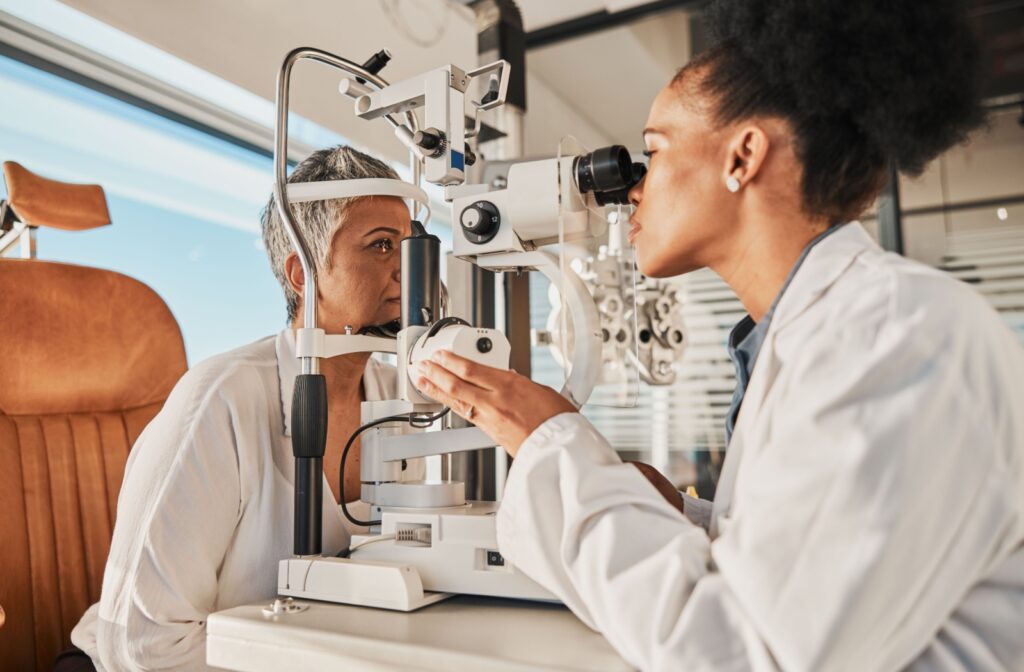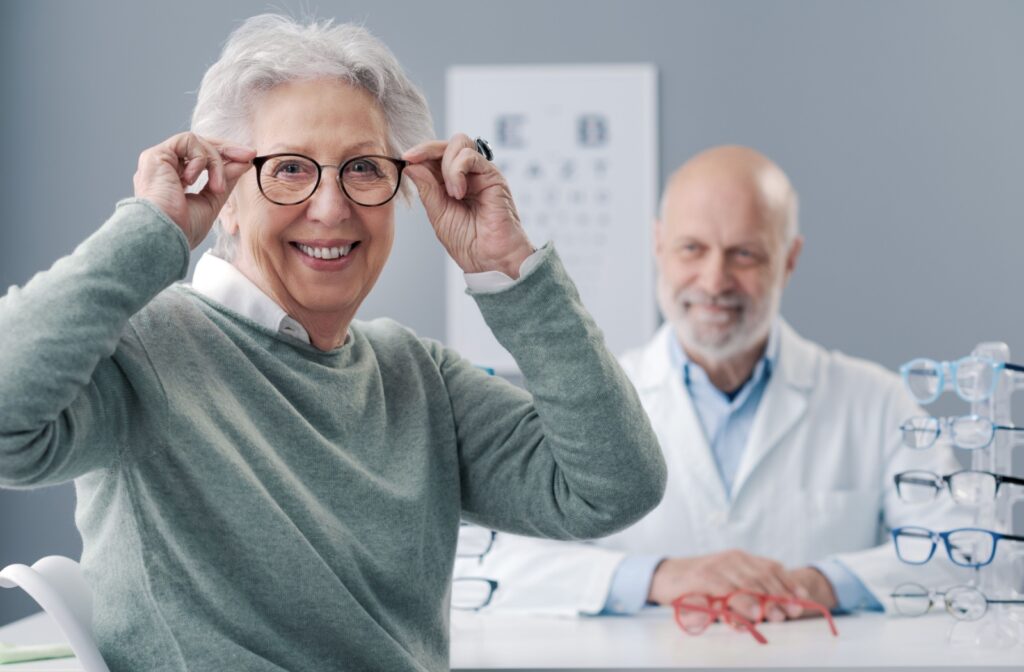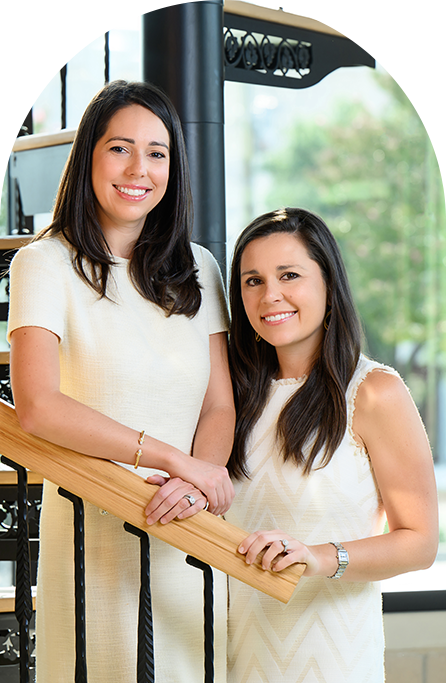There’s more to eye exams than reading letters off an eye chart. The goal of these comprehensive check-ins is to monitor your vision and evaluate your eye health. Picking out glasses at the end of your visit (if necessary) is just part of the fun.
Getting a full picture of your visual health takes time. A routine eye exam can take about 60 minutes, and it usually includes:
- Preliminary testing
- Visual acuity and refraction exam
- Eye muscle function and pupil response
- Overall eye health evaluation
- Discussing your results and options
Whether you’re getting your first pair of specs, updating an old prescription, or just staying on top of your routine exams, knowing what you can expect can make your appointment smoother.
Preliminary Tests
Your appointment begins outside the exam room, where a technician updates your chart. They might ask about any vision problems, family history of eye disease, current medications, and any work or lifestyle habits that might affect your eyes.
Preliminary testing comes next, which provides a baseline of your visual health, and often includes:
- Tonometry: This instrument reads your eye pressure, helping to detect early signs of glaucoma.
- Auto-refractor: As you focus on an image, this machine estimates your current vision prescription and the curvature of the cornea for any contact lens fittings.
- Retinal Images: We take a series of photos (fundus photos) and scans (OCT scans) to get detailed images of your eye’s internal structures, so we can monitor changes over time.
Remember to bring your current glasses, even if they’re old or broken. We can learn a lot from your existing prescription and how your glasses have been working for you.
Vision Evaluation
Once you settle into the exam chair, your optometrist will begin by assessing your vision with a visual acuity test and a refraction exam.
Visual Acuity
The visual acuity test evaluates how well you can see at a standard distance of 20 feet. You’ll cover one eye at a time and read a series of letters that get progressively smaller. If you can read the “20/20” line clearly, it means you have normal distance vision. If you can only read larger letters, you might need glasses to see distant objects clearly.
Your optometrist might also test your near vision using a small card with text in different sizes. This helps determine if you need different prescriptions for distance and close-up work.
Refraction Exam
This test helps your optometrist determine your exact prescription for glasses. You’ll look through a device called a phoropter while your optometrist flips different lenses in front of your eyes. They’ll ask you to compare different options: “Which looks clearer, option one or option two?”
This process might feel repetitive, but each comparison helps fine-tune your prescription. Your eye doctor is measuring exactly how much correction your eyes need for nearsightedness, farsightedness, astigmatism, or presbyopia.
Eye Muscle Function & Pupil Response Test
Having healthy vision is more than just seeing clear, sharp images without the support of corrective lenses; it’s about making sure your visual system (eyes and brain) works cohesively as a strong team.
Your optometrist will check how your pupils react to light and how well your eyes move and work together. They might shine a light in your eyes or ask you to follow their finger as they move it in different directions. These tests check for problems with eye coordination that can cause double vision, eye strain, or reading difficulties.

Eye Health Evaluation
This is where the comprehensive nature of a routine eye exam truly shines.
The tricky thing about certain eye conditions is that they can develop without symptoms until the problem progresses, at which point proper management becomes more complex. Therefore, the sooner your eye doctor takes action and identifies any areas of concern, the better.
The Slit Lamp Exam
A slit lamp is a strong magnifying lens with a bright light that lets your eye doctor examine the cornea, iris, and lens. This can detect cataracts, corneal damage, and any abnormalities on the eye’s surface.
The Retinal Exam
A retinal exam looks at your eye’s internal structures, which include the retina, optic nerve, and blood vessels, to identify diseases such as glaucoma, macular degeneration, or even general health conditions like diabetes or high blood pressure.
This is when your eye doctor discusses the findings of the retinal images taken earlier. If they would like to examine further, they may suggest a pupil dilation, where specialty eye drops widen the pupils, making it easier to identify any abnormal changes within the eye.
Discussing Your Results & Options
After all the testing is complete, your optometrist will discuss your results. If you need glasses, they’ll explain your prescription and talk about different lens options that might benefit your lifestyle and visual needs.
This conversation might cover topics like anti-reflective coatings for computer work, progressive lenses for presbyopia, or specific frame styles that work well with your prescription strength.
Your optometrist will also discuss any eye health findings and recommend appropriate follow-up care if needed.
Healthy Eyes, Happy Eyes
An eye exam isn’t just about updating your glasses, but stylish frames are part of what can make this visit so exciting. Comprehensive eye exams are all about supporting and protecting your visual health. Everyone benefits from routine eye exams, even those who don’t need prescription lenses. Whether it’s been a while since you’ve sat in the exam chair or it’s time for an updated pair of prescription specs, book your routine eye exam with our Vision Veritas team today.





